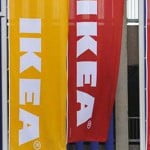Bosak Motors accessorizes up to a fifth of all new Chrysler, Dodge, Jeep and Ram vehicles it sells, which adds $20,000 to $25,000 to its service department’s gross profits each month and helps spur vehicle sales.
The accessorized vehicles have “built an identity for our dealership,” said John Schultheis, general manager of the store in Merrillville, Ind. “It’s complemented our parts and service business and it’s grown our new-car business.”
Bosak’s success with accessory sales sets it apart.
“We know how much money dealers are missing and we know it by brand,” said Steve Bruyn, CEO of automotive marketing research firm Foresight Research in suburban Detroit.
About 7 million new vehicles retailed annually are accessorized by owners within the first two years of ownership to the tune of about $1,950 apiece, said Bruyn. As Millennial buyers saturate the market, the desire to accessorize vehicles will continue to grow, he predicted.
Yet many dealers miss potential profits because they fail to consistently promote accessories. BMW retailers generally excel at accessory sales, a Foresight Research study found, but many volume Asian-brand dealers leave cash on the table.
“Not a lot of effort is expended by Hyundai, for example, in accessories. To the extent it’s being marketed at all, it’s probably being done by the dealer largely,” said Bruyn.
A Hyundai spokesman said the automaker reaches out to its buyers twice with the opportunity to buy accessories: once at 0-3 months after purchase and again around 9-12 months after purchase.

Dealership winners
The vehicle accessory market represents revenue of around $40 billion a year, and dealers get only 5 percent, Ron Lamb, then Reynolds and Reynolds president, told Automotive News last year. He said 90 percent of that $40 billion is spent within 90 days of a vehicle purchase and about half of consumers who accessorize in that time frame spend about $1,500.
Foresight Research’s study, “Inside the Accessory Buyer’s Mind,” surveyed 5,893 retail buyers last summer. Half of them accessorized their vehicle; of those, 2,765 spent at least $250 on accessories, he said.
BMW retailers were the best at capturing those dollars at the dealership, Bruyn said.
“The average BMW buyer is going to spend $808 on accessories in the first 120 days of ownership and of that, $717 is spent at the dealership with $91 going to the aftermarket,” Bruyn said. “They’re doing fabulous.”
Next best were Audi, Mercedes-Benz and Acura dealers, Bruyn said. On the opposite end, the average Kia buyer spends $218 on accessories in the first 120 days of ownership, with less than half of that, $103, spent at the dealership, he said. The average Hyundai buyer spends $234 on accessories, with $118 of that going to the dealership.
The industry average is $388, with $247 going to the dealer and $141 to the aftermarket, he said.
While accessory sales vary by brand and dealership, sales of the items more than double at stores in which salespeople discuss accessories with customers, Bruyn said.
The problem? “Only 43 percent of new-car buyers recalled a conversation about accessories on the showroom floor,” he said.
In addition, many dealers display accessories only in the service and parts area, and shoppers may not go there, Bruyn said. He advises dealerships to display accessories in the showroom, preferably on vehicles to show customers that the store sells accessories and to spark a conversation.
“The objection to buying it at a dealership is price. A customer believes they can get it cheaper elsewhere,” said Bruyn. “But a dealer has to make it known first that it’s available here.”
Bosak Motors, which also sells Honda, Chevrolet and Kia vehicles, began pre-installing and upfitting vehicles after the Great Recession. It was a way to gain a marketing and profit-making edge, said Schultheis.
In 2010, it started building Hurst performance package cars and dubbed itself “Home of the 24/7 car and truck show,” Schultheis said. Since then, it has pre-installed performance-package accessories on Dodge Challengers, Chevrolet Camaros, Ram pickups and others.
“The builds we do are the precursor to the traditional accessories we sell,” Schultheis said. “A customer might look at a build and can’t afford it, but they might want to upfit the leather interiors, the shifters or exhaust work. We do quite a bit of mechanical work.”
Bosak Auto Group sells 6,200 new and used vehicles a year, including 2,000 at the Chrysler-Dodge-Jeep-Ram store. Of those, customers accessorize 10 to 20 percent of the new vehicles it sells each month. A customer might spend $1,600 to add a Katzkin leather interior, which yields a profit margin for the dealership of 30 to 40 percent, Schultheis said.
The dealership isn’t the only one making money on accessories. Sales staffers earn commissions on the sales, too.
For instance, a set of step tubes on a pickup costs $800, earning a Bosak salesperson a 7 percent commission, or $56, a nice addition to the dealership’s typical commissions of $200 to $400 on a vehicle sale, Schultheis said.
Schultheis keeps about a dozen customized performance vehicles in stock at the Chrysler-Dodge-Jeep-Ram store for “visual effect.” Some sell in a few days, yielding up to a $4,000 profit. Others may sit for a year, but he’s OK with that. “I spend about $60,000 a month advertising our products. If that custom build sits on the lot and someone looks at it,” even if they buy a different Dodge, “then it’s doing its job,” he said.
[Source”cnbc”]










